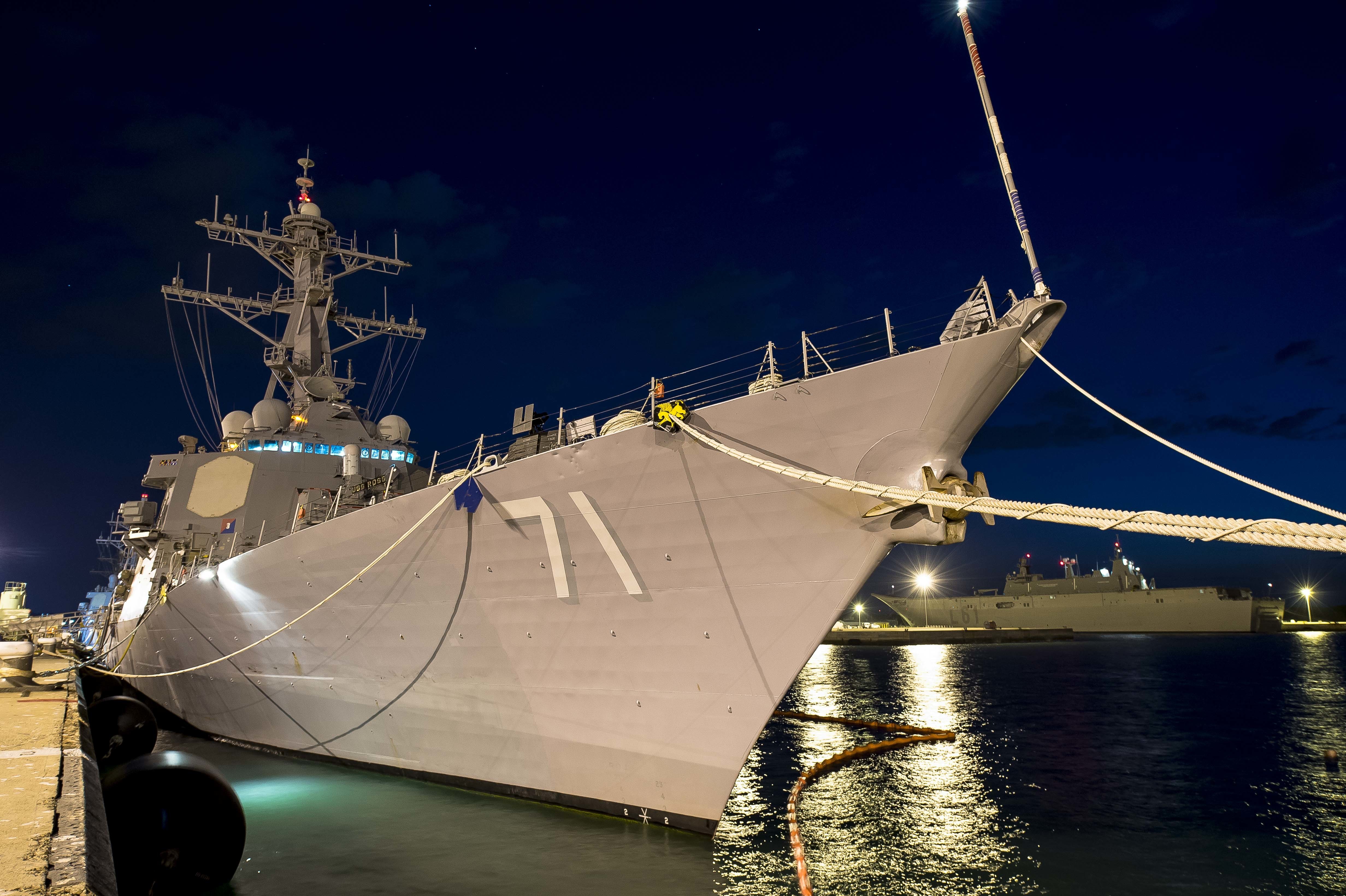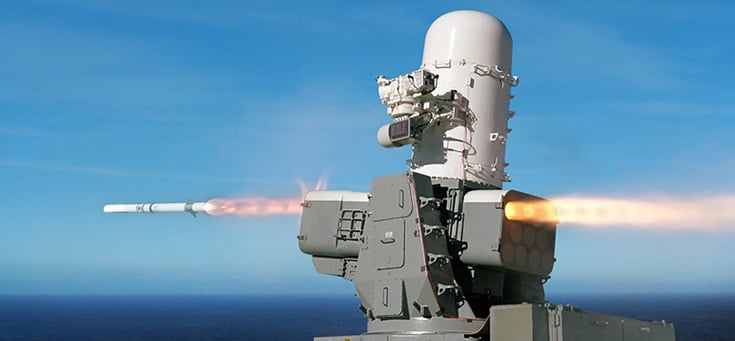
The four ballistic missile defense destroyers patrolling 6th Fleet will get a self-protection upgrade beginning this year, as the Navy integrates Raytheon’s Sea Rolling Airframe Missile (SeaRAM) onto its Aegis-equipped Arleigh Burke-class destroyers (DDG-51) for the first time.
U.S. 6th Fleet leadership sent an urgent requirement for self-protection on the four ships, which focus all their energy on the BMD mission, Program Executive Officer for Integrated Warfare Systems (PEO IWS) Rear Adm. Jon Hill said last week at an American Society of Naval Engineers event.
“We put [the ships] out there by themselves, and they’re putting all their radar energy up in space, they’re tracking space objects now, and you have to wonder, hey, can they defend themselves?” he said. After toying with the idea of putting a second ship nearby to protect the BMD destroyer – much like a cruiser protecting an aircraft carrier – the Navy decided the SeaRAM could fill the self-protection requirement even though the system had never been paired with an Aegis ship before.
“What we had to do was really develop software, make sure we had the equipment ready to roll, get the computer programs aligned,” Hill told USNI News after the event.
“And the big thing you have to worry about is fratricide – so where you put that mount on the ship, it’s looking right over the vertical launching system, so what you don’t want to have happen is you’re shooting something with the SeaRAM while missiles are coming out of the VLS. So that’s the fundamental bit of integration we have to do.”
Hill added there were no extra SeaRAM systems lying around, so he pulled equipment from a foreign military sales program to allow for the quickest installation possible. He said the Navy also leveraged testing done by other programs to help speed up the process of integrating SeaRAM onto a new class of ships.

According to a February reprogramming request by the Pentagon comptroller, the Navy requested $15.3 million in Fiscal Year 2015 to get started on filling the urgent need, to be followed by additional funding in FY 2016. That money will help “capitaliz[e] on factory flexibility to work an extra shift,” minimizing the delay to the FMS contract.
USS Porter (DDG-78) and USS Carney (DDG-64), which arrived in Spain this year, will undergo selected restricted availabilities in fiscal year 2016 and will receive the SeaRAM upgrade then. Hill said Porter should be through maintenance and back on station by about November.
USS Ross (DDG-71) and USS Donald Cook (DDG-75) will have availabilities in FY 2017 and will receive SeaRAM then.
Hill said the level of integration between SeaRAM and Aegis Combat System would improve as they learn more with each ship.
“We’re pretty excited about it. It’s a great missile system, it’s a great radar system, it gives them an extra layer of capability they don’t have today,” he said.
As currently configured, the four Rota destroyers are equipped with an older Aegis baseline that requires the ship to operate in a BMD mode or switch to the traditional aircraft and cruise missile defense role. The Navy’s new Baseline 9 ships can do both missions at the same time, but modernization reductions could limit the number of those ships in the fleet.
SeaRAM is a combination of Raytheon’s Phalanx Close-In Weapon System and Rolling Airframe Missile (RAM) Guided Weapon System.
“An 11-missile RAM launcher assembly replaces Phalanx’s 20 mm gun. SeaRAM combines RAM’s superior accuracy, extended range and high maneuverability with the Phalanx Block 1B’s high resolution search-and-track sensor systems and reliable quick-response capability,” according to Raytheon’s website.
Hill said this extra fire power is important to the surface warfare community’s new distributed lethality philosoph: if each ship, regardless of its mission, is upgunned, a potential opponent cannot overlook any ship in the fleet when calculating its next move. Hill said distributed lethality brings the emphasis back from defensive to offensive operations – which would be true of the four destroyers, who could now go after an enemy ship if needed rather than stay focused on the BMD mission solely.





